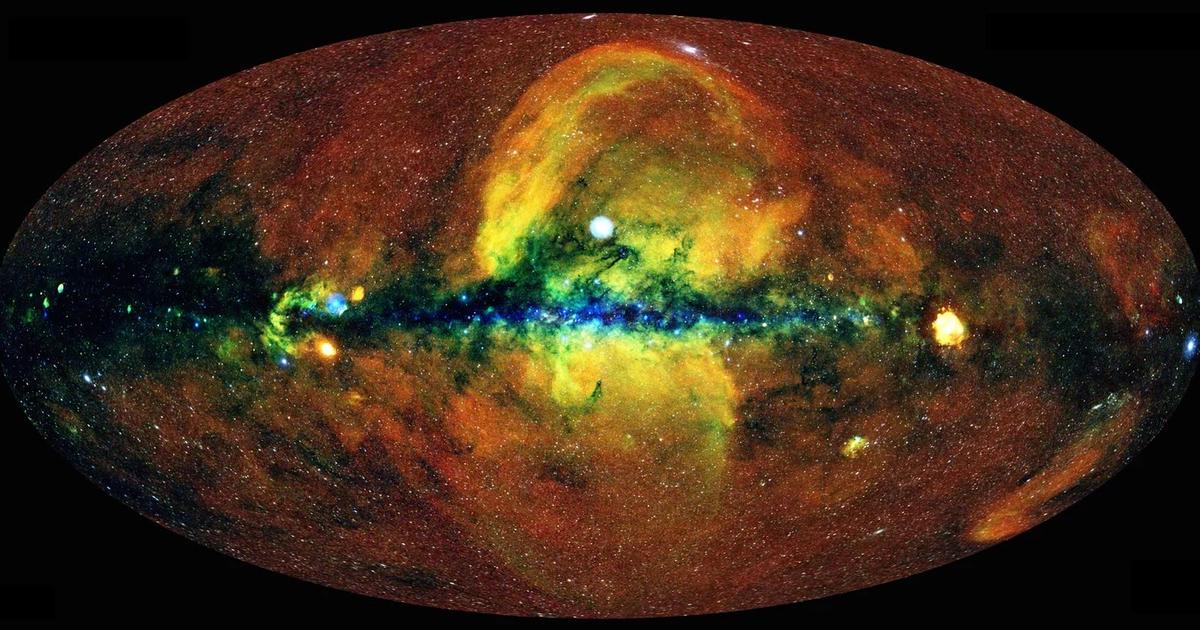Enlarge image
The telescope of the "Dark Energy Survey" in Chile: How is matter distributed in the universe?
Photo: Andreas Papadopoulos / dpa
The universe is "less lumpy" than expected.
This is the conclusion reached by a team of over 150 researchers from all over the world.
It is one of the most detailed studies of the structure of space that has ever taken place.
The study was published in the journal »Physical Review D«.
So far, science has assumed that the matter visible to us, i.e. stars and galaxies, moons or asteroids, only makes up a fraction of the universe.
Around a quarter consists of so-called dark matter, an invisible mass that is noticeable solely through its gravitational force.
The rest is dark energy, a kind of anti-gravity that keeps the universe expanding.
After the Big Bang, matter in the universe cooled down.
Gravity pulled denser areas together—they clumped together.
This is how clusters of galaxies are formed.
Matter is not evenly distributed in the universe.
However, it is also not as lumpy as researchers previously assumed.
At least that's what the new study suggests.
"There seems to be a little less variation in density in today's universe than we would expect based on our standard cosmological model," explained Eric Baxter, cosmologist and one of the researchers involved.
This standard model describes what proportions of normal matter, dark matter and dark energy the universe contains, how old the cosmos is and how fast it is expanding.
"But this standard model is anchored in the early universe," Baxter pointed out.
So it applies to the entire history of the universe – from the Big Bang through today to the future.
So far the most accurate data on the distribution of matter in space
The researchers collected data from two special telescopes over the years.
The first, the South Pole Telescope, is in Antarctica.
It looks for traces of radiation from the first moments of the universe.
The second belongs to the "Dark Energy Survey" and stands on top of a mountain in Chile.
It examines the sky and the extent of the universe.
The researchers analyzed the collected data using a phenomenon known as gravitational lensing: when light passes through denser regions in the universe, such as a cluster of galaxies, it is deflected and slightly bent.
From this, astronomers can determine the distribution of matter.
The advantage of the method: It not only records the visible matter, but also the invisible dark matter.
Both telescopes provided the experts with the most accurate data to date on the distribution of matter in the current cosmos.
And led independently to the same result: the density fluctuations are slightly smaller than predicted by the standard model, the universe is less lumpy.
This could mean: The model is missing a crucial component - it is not yet complete.
Or the standard model contains an error.
"The whole point of physics is to test models and reject them," Chihway Chang told the Guardian.
He is an astrophysicist and lead author of the study.
"In the best scenario, this will help us to understand more about the nature of dark matter and dark energy." First, however, the result must be confirmed by further, independent observations.
akl/dpa









/cloudfront-eu-central-1.images.arcpublishing.com/prisa/BI4VNORLKVHTLF4MEMPC3K27QE.jpg)





